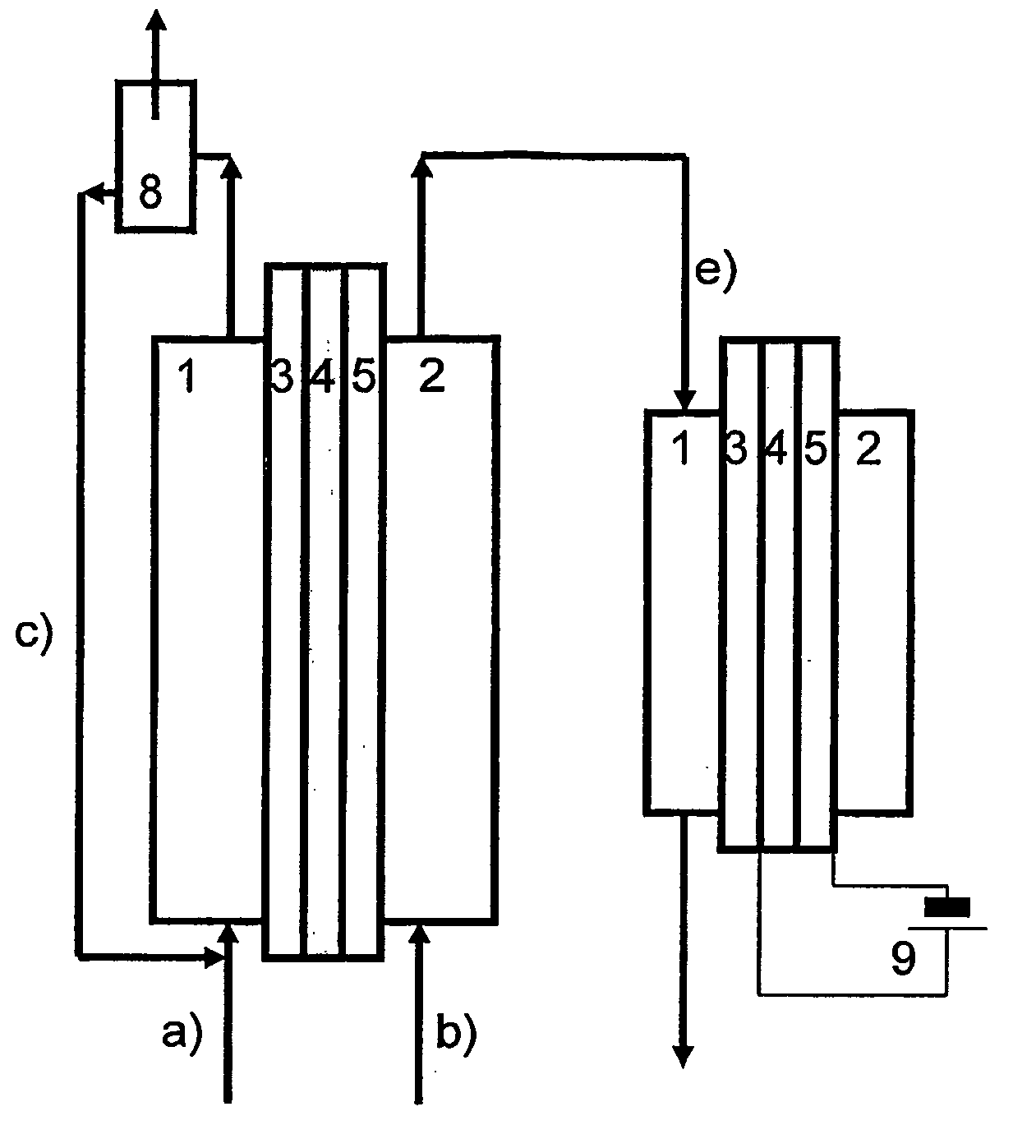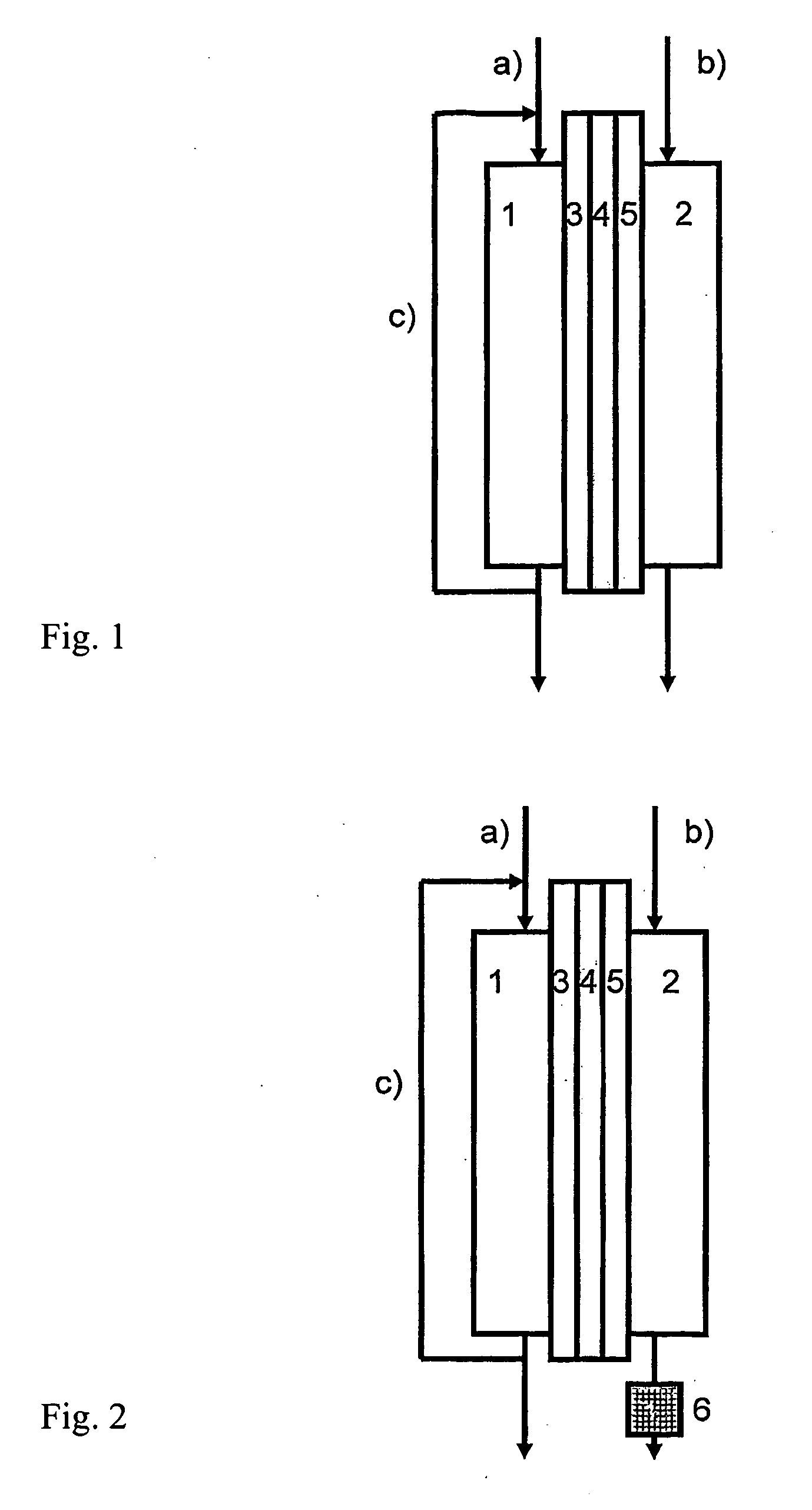Exhaust gas purification system for a fuel cell or a fuel cell stack
- Summary
- Abstract
- Description
- Claims
- Application Information
AI Technical Summary
Benefits of technology
Problems solved by technology
Method used
Image
Examples
Embodiment Construction
[0027]Test Setup:
[0028]The anode of a direct-methanol fuel cell stack was supplied with a methanol solution, and the cathode was supplied with air. The number of cells was 100, and the surface area of each cell was 300 cm2. The total air flow was approximately 300 l / min. Using a measuring instrument, the methanol concentration in the exhaust gas was measured. In order to obtain a direct correlation between the methanol content in the exhaust gas and the voltage applied to the electrochemical cell under comparable experimental conditions, the experiment was started with a voltage V=1 Volt. The electrochemical cell included three cells, which were identical to those in the fuel cell stack. The exhaust gas from the stack was conducted to the anode input of the electrochemical cell.
[0029]At a voltage of 1 V, the methanol content in the exhaust gas downstream of the electrochemical cell was 84 ppm. Increasing the cell voltage to 2 V produced a clear reduction to 73 ppm, and the further i...
PUM
| Property | Measurement | Unit |
|---|---|---|
| Electric potential / voltage | aaaaa | aaaaa |
| Electric potential / voltage | aaaaa | aaaaa |
| Electric potential / voltage | aaaaa | aaaaa |
Abstract
Description
Claims
Application Information
 Login to View More
Login to View More - R&D
- Intellectual Property
- Life Sciences
- Materials
- Tech Scout
- Unparalleled Data Quality
- Higher Quality Content
- 60% Fewer Hallucinations
Browse by: Latest US Patents, China's latest patents, Technical Efficacy Thesaurus, Application Domain, Technology Topic, Popular Technical Reports.
© 2025 PatSnap. All rights reserved.Legal|Privacy policy|Modern Slavery Act Transparency Statement|Sitemap|About US| Contact US: help@patsnap.com



